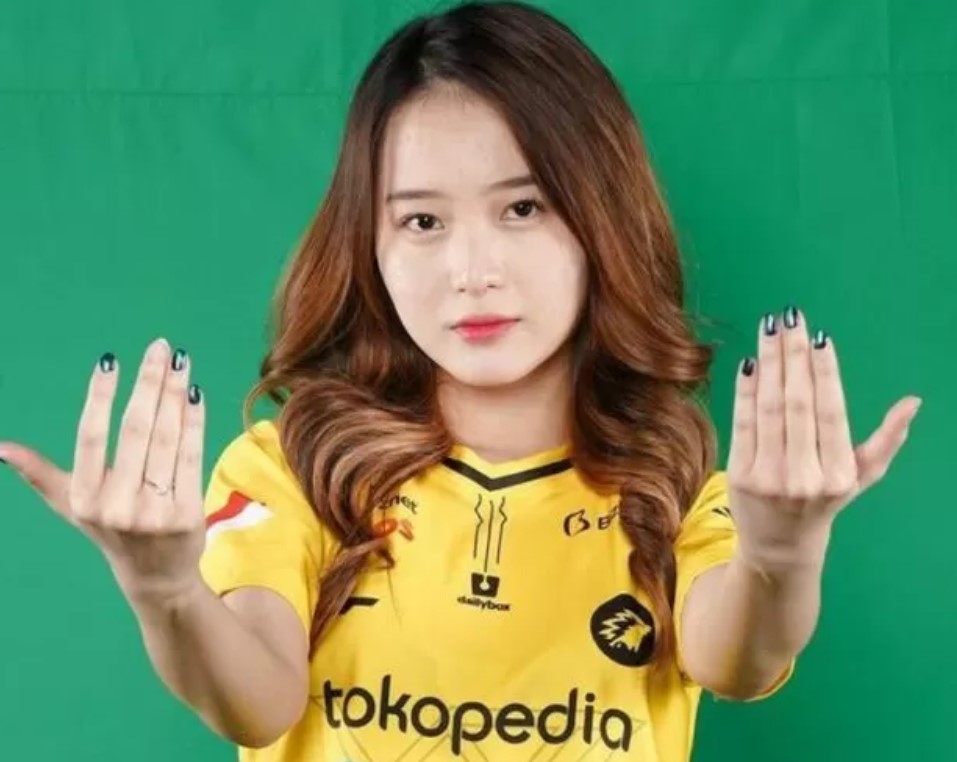Onic Vior Viral Video on Digital Privacy and Media Ethics
In recent times, the digital landscape has been rife with incidents that capture public attention, but few have stirred as much controversy as the viral emergence of the “Onic Vior” video. This particular piece of media gained rapid attention due to its intimate content and the mysterious aura surrounding its principal subject, Onic Vior, a pseudonym that has since been embroiled in debates and ethical scrutiny. The video, which showcases personal and private moments, was not intended for public broadcast, yet it found its way onto various social media platforms, where it spread like wildfire.
The content of the video itself is delicate, featuring intimate interactions involving Onic Vior, which raises significant concerns about privacy violations and consent. Its unauthorized distribution has sparked a myriad of reactions, ranging from outrage and sympathy for the individuals involved, to curiosity and rampant speculation about the identities of the figures in the video. The public’s engagement has been further amplified by intense media coverage, which has played a dual role in both condemning the breach of privacy and, paradoxically, facilitating the video’s wider dissemination.
Media outlets, while covering the story, have also highlighted the broader implications such as the potential harm and lasting impact on the individuals’ personal and professional lives. This has opened up conversations about digital ethics, the responsibilities of social media platforms in controlling content, and the legal ramifications for those who distribute such media without consent. The “Onic Vior” video serves as a stark reminder of the vulnerabilities associated with digital content and the powerful, sometimes destructive, role that viral media can play in modern society.
Content
The Content of the Video Leak
The video features Onic Vior in what appears to be a series of personal and intimate moments. The settings are mundane likely a private residence and the interactions seem candid, capturing unguarded expressions and private exchanges that are typically shielded from the public eye. The exact details of the content are not disclosed here to protect privacy, but the nature of the video is such that it showcases moments not meant for public exhibition.
Onic Vior’s leaked video going very viral
Onic Vior’s leaked video sharp and clear
The controversy surrounding the video stems from several factors. Primarily, it is the breach of privacy the unauthorized sharing of personal moments without consent which stirs ethical and legal questions. The video’s content, being intimate, makes this breach all the more egregious, as it exposes personal vulnerabilities to public scrutiny, often leading to significant emotional and psychological distress for those involved.
Moreover, the implications of such videos being leaked or shared publicly are vast. For the individuals captured in the video, there is the immediate shock and potential damage to personal relationships and professional reputations. There is also a broader societal impact to consider: the normalization of privacy invasions and the potential desensitization to the sharing of intimate content without consent. These incidents not only highlight the challenges of managing personal boundaries in a digital age but also prompt a reevaluation of legal frameworks governing digital content and privacy.
In summary, the video of Onic Vior serves as a poignant example of the power of social media to both connect and disrupt lives. It raises critical questions about privacy, consent, and the ethical responsibilities of individuals and platforms in the digital realm. As such, it becomes a focal point for discussions on how society should navigate the balance between freedom of information and the protection of individual privacy in the increasingly interconnected digital world.
Background Information
“Onic Vior” is a fabricated identity created for the purpose of this discussion, representing an individual who suddenly finds themselves at the center of a viral scandal. This hypothetical character exemplifies the experiences of many who unintentionally become public figures through the widespread sharing of their private moments on digital platforms. The video in question, featuring intimate scenes involving Onic Vior, catapulted from obscurity to widespread notoriety overnight, illustrating the profound and sometimes perilous reach of the internet.
The video first came to public attention through an anonymous upload on a popular social media platform. Initially shared within a small group, the allure of its content intimate and private ensured it was quickly disseminated across various networks. As views accumulated, the video migrated from the shadows of private messaging to the forefront of major social media feeds, eventually attracting the attention of larger audiences and media outlets.
The role of social media in the spread of the video is critical to understand. Platforms equipped with algorithms that favor sensational content can amplify the reach of such videos exponentially, often outpacing the ability of involved parties to control or contain the dissemination. This virality is further fueled by the innate human tendency to share compelling content, driven by curiosity and the desire to be part of trending conversations.
Public and Media Reaction
The public reaction to the viral video of “Onic Vior” on social media platforms was immediate and intense, demonstrating the powerful ripple effects of viral content. Many users expressed outrage and empathy towards the individuals affected, criticizing the invasion of privacy and the ethical breaches involved. Others, drawn by curiosity, contributed to the video’s virality, sharing and commenting, thus complicating the ethical landscape. Social media, in this case, served as both a platform for public support and a vehicle for further invasion of privacy.
Media coverage of the incident varied widely. Some news outlets took a sensational approach, prioritizing the lurid details of the video over the privacy rights of the individuals involved. Conversely, more responsible journalists focused on the broader issues at play, such as digital privacy and the ethical implications of sharing such content. This dichotomy in media response highlighted the ongoing debate between public interest and the right to privacy.
Official statements from the parties involved were sparse; however, those that were issued typically condemned the leak and called for respect for personal privacy. Law enforcement agencies began investigations into the circumstances of the video’s release, emphasizing the potential illegality of distributing intimate content without consent.
Ethical and Legal Considerations
The ethical issues surrounding the breach of privacy in the “Onic Vior” case are profound. The unauthorized dissemination of intimate content raises questions about the moral responsibilities of both individuals and platforms in the digital age. Ethically, the privacy of individuals is a paramount concern, and violating this can have severe emotional and psychological impacts.
Legally, the situation is just as complex. Those involved in distributing or leaking such videos may face charges under laws designed to protect against revenge porn and other forms of non-consensual content sharing. The legal frameworks vary by jurisdiction but generally include severe penalties for such violations.
For the individuals appearing in the video, the repercussions extend beyond the immediate emotional distress. There could be long-term impacts on their personal relationships, career opportunities, and overall public perception. The incident thus raises significant legal questions about consent, privacy rights, and the adequate response by law enforcement to protect these rights.
The “Onic Vior” incident has served as a stark reminder of the vulnerabilities inherent in our digital world. This discussion has underscored several key points: the ease with which privacy can be breached, the varying reactions of the public and media, and the complex interplay between ethical norms and legal protections in the digital age.
Reflecting on the broader impact, the incident highlights a critical need for stricter regulations on digital content and a more conscientious approach by social media platforms to protect privacy. It also calls for a societal shift towards greater empathy and respect for personal boundaries online.
As we move forward, this incident is likely to influence future discussions and policies regarding internet privacy. It serves as a crucial case study in the ongoing dialogue about how society values and protects personal information in an increasingly interconnected world. The lessons learned here should guide us in crafting a digital environment that upholds dignity and privacy as foundational principles, ensuring that personal moments remain protected from unwarranted public scrutiny.
Daily Hot News -Chris Sails Video Leak and Analyzing the Impact
Imsha Rehman Viral Video and Digital Ethics
Lydia Onic Viral Video and Breaking Down the Impact
Equatorial Guinea Viral Video and Government Official Caught
Baltasar Engonga Ebang Video and Unraveling the Scandal
Balthazar Video Viral Outbreak in Equatorial Guinea
Dolphin Ayan Viral Video Full Link 2024 Incident Analysis



